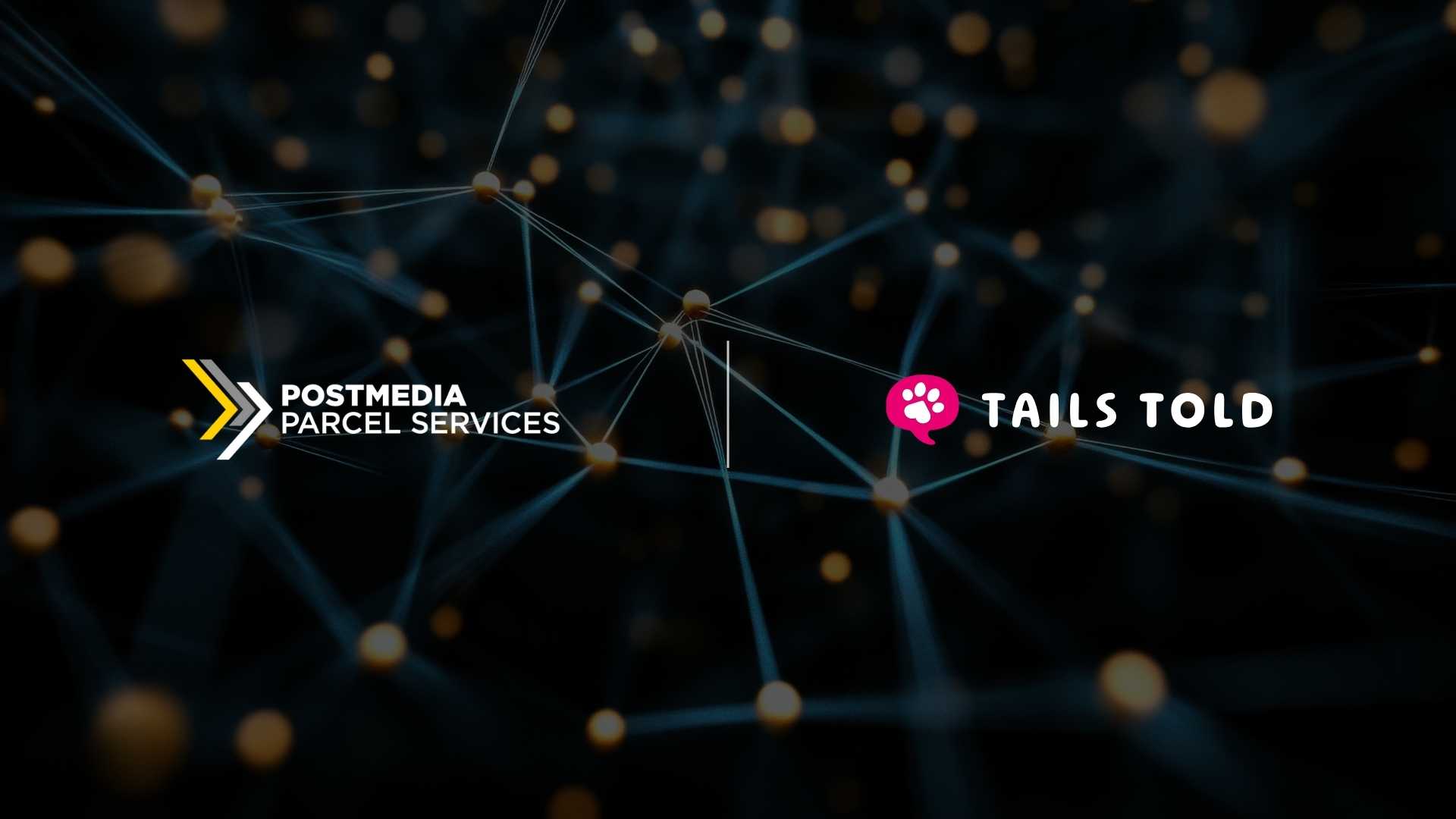
News
How Americans Use Social Platforms in 2025—and What Marketers Must Do Next
digital marketing 25 Nov 2025
New data from Pew Research Center’s 2025 survey offers a sharper view of how Americans use social platforms and how these patterns continue to shift across age, gender, education, and political lines. While the dominant networks remain familiar, the underlying behaviours look increasingly fragmented. Because of this, marketing teams need smarter segmentation and more adaptive content strategies. This article breaks down key findings and translates them into practical steps for brand leaders.
Platform Dominance and Shifting Attention
YouTube and Facebook still dominate the social landscape. YouTube reaches 84% of US adults, while Facebook maintains 71% penetration. Only Instagram joins them above the 50% threshold. Meanwhile, TikTok, WhatsApp, Reddit, and Snapchat sit slightly behind. Their audiences remain smaller but highly valuable due to their depth of engagement.
Marketers should not ignore this distribution. Instead, they should align media budgets with proven reach while still experimenting with emerging channels. YouTube and Facebook deserve continued investment. However, Instagram and TikTok should anchor vertical video strategies aimed at younger and more mobile-first audiences. Reddit and WhatsApp continue to grow, so they offer useful opportunities for segmented or community-driven campaigns.
Where Growth Is Actually Happening
Although Facebook and YouTube remain massive, their reach has stalled. Growth is happening elsewhere. TikTok use rose sharply from 21% in 2021 to 37% in 2025. WhatsApp climbed from 23% to 32%. Reddit jumped from 18% to 26%. This shows where cultural momentum sits.
Brands targeting younger or digitally dynamic audiences should increase their visibility on TikTok and Instagram. Because WhatsApp and Reddit support interest-led behaviour, they provide useful environments for conversational marketing or community engagement. Although reach alone does not guarantee relevance, growing platforms often produce the strongest early ROI when brands act before competition peaks.
Age Still Determines Where People Spend Time
Age remains the most powerful predictor of platform choice. Younger adults use Instagram, Snapchat, TikTok, and Reddit at far higher rates. Eighty percent of adults aged 18–29 use Instagram compared with only 19% of those 65 and older. Only YouTube and Facebook manage to cut across every age bracket.
Marketers should tailor channel selection accordingly. Gen Z and millennials respond well to authenticity, humour, and rapid storytelling. Meanwhile, Gen X and Boomers prefer value-driven, straightforward content on Facebook and YouTube. Because daily behaviour differs across generations, brands need audience-specific content formats rather than one-size-fits-all strategies.
Gender, Race, Ethnicity, and Education Shape Platform Habits
Gender gaps persist. Women favour Facebook, Instagram, and TikTok, while men gravitate toward Reddit and X. Differences across race and ethnicity are equally meaningful. Hispanic, Asian, and Black adults use Instagram, TikTok, and WhatsApp more than White adults. Education also plays a role, with highly educated segments using Reddit, WhatsApp, and Instagram at above-average rates.
Marketers should adjust both format and messaging. Instagram and WhatsApp matter for multicultural targeting. Reddit can support deeper, more technical conversations with male or highly educated audiences. Gender-informed and culture-informed strategies are increasingly necessary for performance outcomes.
Politics and Platform Preference
Political identity continues to influence platform choice. Democrats lean toward WhatsApp, Reddit, TikTok, Bluesky, and Threads. Republicans prefer X and Truth Social. Although X’s user base has shifted over the years, it retains a unique position in political discourse.
Brands must approach political segmentation with caution. This is especially important for organisations working in finance, healthcare, energy, or other policy-adjacent sectors. Platform choice can shape perception, so alignment with audience tendencies matters.
Daily Use and Engagement Frequency
Daily behaviour highlights where users show real dependency. Half of US adults visit Facebook and YouTube every day. Facebook, however, leads in intensity, with 37% returning several times per day. TikTok sees 24% daily use, mostly from younger audiences. X trails far behind at 10%.
Always-on content strategies should align with this activity. Facebook and YouTube offer consistent reach for evergreen posts and longer-form storytelling. TikTok demands fast, trend-led content built for quick bursts of attention. Older Facebook audiences expect fewer but more meaningful posts, while younger TikTok users reward rapid, reactive updates.
What Marketing Leaders Should Do Now
The 2025 social landscape requires agility. Digital behaviour is splitting along demographic, cultural, and political lines. Because of this, brands must diversify their channel mix and avoid relying on a single dominant platform. They should segment audiences more precisely, test emerging channels such as Threads and Bluesky, and refine content formats by age group.
Short-form video remains critical for younger consumers. Meanwhile, value-centric and educational content resonates with older ones. These demographic differences represent strategic opportunities. Brands that adapt quickly will gain relevance and long-term digital resilience.
Home Theatre Market Set to Double by 2033 as Smart Entertainment Demand Surges
marketing 25 Nov 2025
The global home theatre market is entering a new expansion phase, driven by rising consumer investment in premium entertainment systems and rapid advancements in smart, connected device technology. New projections from SNS Insider show the market’s total value reaching USD 23.52 billion by 2033, nearly doubling from USD 11.92 billion in 2025, with an expected CAGR of 8.90% from 2026 to 2033.
As consumers rethink how they experience media at home, the shift toward smarter, wireless, and AI-enhanced audio-visual ecosystems is reshaping the entire category.
Smart, Connected Systems Accelerate Global Growth
The strongest driver of market expansion is the rapid adoption of smart home entertainment systems. As households integrate more IoT-enabled devices, users increasingly expect seamless streaming, multi-room setups, and smarter sound systems that adjust automatically.
Modern home theatre systems now feature voice control, wireless connectivity, and AI-powered sound tuning, enabling a highly personalized experience. These capabilities help transform the living room into a connected entertainment hub capable of delivering cinema-level audio and video quality without complex installations.
The rise of smart homes is also fueling demand for interoperable devices. Consumers want systems that work fluidly with Apple HomeKit, Google Home, Alexa, and other ecosystems, increasing pressure on manufacturers to innovate in wireless standards, app interfaces, and cross-platform compatibility.
Rising Consumer Spending Boosts Premium Audio and Visual Products
A continued increase in household expenditure on entertainment products is another key contributor to market growth. Consumers are prioritizing high-fidelity audio systems, 4K/8K projectors, immersive soundbars, and modular speaker setups as they create personalized media environments.
This shift accelerated during the post-pandemic period as hybrid work patterns led people to spend more time at home. As a result, customers are more willing to invest in advanced systems that deliver premium experiences for movies, gaming, music, and sports.
Manufacturers are responding with improved product design, better material quality, and flexible configurations that fit living spaces of all sizes.
Wireless and AI Technologies Redefine Home Entertainment
The demand for wireless devices—such as Bluetooth and Wi-Fi-enabled speakers, modular soundbars, and streaming boxes—remains high. The elimination of cables, combined with more compact form factors, makes modern home theatres both aesthetically appealing and easier to install.
Meanwhile, AI-driven features are elevating the listening experience. Systems equipped with real-time audio calibration can analyze room acoustics and adjust sound output automatically. This level of intelligence, once limited to high-end studios, is now becoming mainstream.
These trends set the stage for manufacturers to develop even more refined systems with adaptive audio profiles, content-specific tuning, and automated device orchestration across home networks.
What’s Next for the Home Theatre Market?
As the market expands, competition will intensify among established brands and new entrants. Companies focusing on AI-enabled sound systems, ultra-high-definition projectors, low-latency wireless tech, and smart home integrations will lead the next growth wave.
The rising popularity of gaming, especially cloud gaming and e-sports, will also push manufacturers to build high-performance systems supporting ultra-low-latency audio and high-refresh-rate displays.
With consumers demanding more immersive, connected, and user-friendly experiences, the home theatre market is poised for sustained innovation through the next decade.
Vodacom Taps Google Cloud to Accelerate AI Adoption Across Africa
marketing 25 Nov 2025
Vodacom Group has entered a major collaboration with Google Cloud to fast-track its digital transformation and roll out next-generation AI-powered services across Africa. The pan-African telecom giant will integrate Google Cloud’s data analytics and generative AI stack — including Gemini, Veo, and Imagen — to modernize its infrastructure and develop new digital products for consumers and enterprises.
The partnership centers on using Google Cloud’s scalable infrastructure to unify Vodacom’s extensive data landscape. By consolidating critical data platforms onto Google Cloud’s data cloud and BigQuery, Vodacom aims to achieve real-time insights, stronger governance, and a single source of truth to support large-scale AI deployments.
“This collaboration is more than a technology upgrade; it is a deep commitment to Africa’s digital revolution,” said Shameel Joosub, CEO of Vodacom. He added that the move will help deliver AI-powered services that address the continent’s unique challenges and unlock new opportunities for millions of users.
Maureen Costello, VP for UKI and SSA at Google Cloud, said the company is "proud to support Vodacom in accelerating AI across Africa," emphasizing the value of generative AI models like Gemini in enabling new capabilities and services.
A Three-Pillar Strategy to Build Africa’s AI Future
1. Data Modernization & Unification
Vodacom will migrate its data systems to Google Cloud, integrating BigQuery to improve analytics, governance, and speed — essential for deploying advanced AI models at scale.
2. Accelerated AI Adoption
Using Vertex AI and Gemini, Vodacom will embed AI across its operations. Early focus areas include network optimization, personalized customer service, fraud detection, and automated support.
3. Product Innovation for the African Market
The collaboration will also fuel new fintech solutions to drive financial inclusion, enterprise-grade digital services, and enhanced consumer experiences in content access and education.
The initiative builds on the existing partnership between Vodafone (Vodacom’s parent company) and Google Cloud, reinforcing a shared push to expand secure, scalable AI innovation globally.
Alibaba Leans Into AI and Cloud as Revenue Climbs but Profit Drops Sharply
marketing 25 Nov 2025
Alibaba reported its financial results for the quarter and six months ending September 30, 2025, revealing strong momentum in its AI and cloud businesses but significant pressure on profitability as the company enters an aggressive investment cycle.
CEO Eddie Wu said the company is doubling down on “long-term strategic value” across AI technologies, cloud infrastructure, and a unified consumption platform integrating e-commerce with daily life services. Cloud Intelligence Group remained the standout performer—revenue jumped 34% year-over-year, driven by surging enterprise demand for AI tools. AI-related products posted triple-digit growth for the ninth straight quarter.
In its consumption business, Alibaba continued scaling quick commerce, improving unit economics and pushing rapid growth in monthly active users on Taobao. CFO Toby Xu noted that Alibaba has deployed roughly RMB120 billion in capex over the past four quarters to strengthen AI and cloud infrastructure, while cautioning that profitability will fluctuate in the near term.
Quarterly Performance: Revenue Up, Profit Down
Alibaba posted quarterly revenue of RMB247.8 billion, up 5% year-over-year, or 15% on a like-for-like basis excluding divested units Sun Art and Intime.
But income from operations fell 85% to RMB5.4 billion, weighed down by a 78% drop in adjusted EBITA due to heavy investment in quick commerce, user experience enhancements, and technology development.
Net income attributable to shareholders came in at RMB21.0 billion, down 53% from the prior year as operating income contracted sharply.
Free cash flow flipped to an outflow of RMB21.8 billion, compared to a RMB13.7 billion inflow last year, reflecting major spending on cloud infrastructure and commerce expansion. Alibaba ended the quarter with RMB573.9 billion in cash and liquid investments.
Six-Month Results: Modest Revenue Growth, Margin Pressure Continues
For the six-month period, revenue rose 3% to RMB495.4 billion, or 12% on a like-for-like basis. Income from operations dropped 43% to RMB40.4 billion, with adjusted EBITA declining 44% year-over-year.
Net income held up comparatively better, slipping 7% to RMB63.0 billion, supported by mark-to-market gains on equity investments, lower impairments, and gains from the disposal of Trendyol’s local consumer services unit.
However, free cash flow again swung into negative territory, with an outflow of RMB40.7 billion, driven by elevated capex for cloud expansion and quick commerce initiatives.
Alibaba emphasized that while its AI + Cloud and consumption businesses are delivering strong growth, it expects continued volatility in profitability as it reinvests heavily in future-focused infrastructure and next-generation services.
Streann Media Brings AI-Powered Streaming to World Legends Padel Tour’s 2025 Miami Finals
digital marketing 25 Nov 2025
The World Legends Padel Tour (WLPT) is dialing up its digital game. The fast-growing international padel circuit, known for its roster of former global football icons, has partnered with Miami-based Streann Media to deliver a fully modernized streaming and content experience for the 2025 Miami Finals.
The season-ending event, set for November 29–30 at the Ultra Padel Club, anchors a global tour that spans London, Paris, Rome, Madrid, Amsterdam, Istanbul, and New York. Miami now serves as the finale—and the most digitally connected moment in WLPT’s calendar.
And with the lineup the WLPT brings, attention won’t be hard to find. Fans can expect appearances from legends such as Francesco Totti, Christian Vieri, Fernando Llorente, Vincent Candela, Luca Toni, Andriy Shevchenko, Diego Perotti, Germán Denis, Tommaso Locatelli, and Marco Materazzi. The tour continues to merge elite athletic culture with global football heritage, giving padel an entertainment boost few emerging sports can claim.
AI, Streaming, and Real-Time Production Take Center Stage
Under the new partnership, Streann Media will manage every digital touchpoint of the Miami Finals. This includes multi-camera production for matches and the awards gala, live venue feeds, and a full-scale social media content operation. The event will stream on a newly launched WLPT channel hosted on StreannStudio.ai, Streann’s AI-powered video platform aimed at creators, brands, and sports communities.
The platform functions as a complete digital hub. It blends live studio controls, on-demand hosting, highlight clipping, and channel programming—giving WLPT a central place to distribute everything from top-tier match coverage to behind-the-scenes footage. Fans worldwide will be able to watch live broadcasts, replays, interviews, and AI-generated short clips designed for discovery across social platforms.
Social coverage itself will lean heavily on automation. Streann’s SocialCap.ai tool will be used to generate captions, post copy, and short-form edits in real time. WLPT expects to deliver continuous updates across its channels throughout the Finals weekend, optimizing visibility and engagement.
Why This Partnership Matters for Sports Tech
Padel’s global footprint has been accelerating faster than many traditional sports, and leagues are racing to modernize how they reach fans. WLPT’s move signals a broader trend: mid-sized sports properties embracing AI-driven media infrastructures to compete with major leagues.
By centralizing video workflows and layering in AI-assisted content creation, WLPT is positioning itself as one of the most digitally progressive global sports circuits. For Streann Media, the partnership becomes a showcase of its rapidly expanding AI capabilities at the intersection of sports and entertainment.
Alessandro Moggi, President of the World Legends Padel Tour, emphasized the importance of digital transformation. He noted that Streann’s platforms will allow WLPT to deliver a more elevated, cohesive experience across all channels. Streann CEO Giovanni “Gio” Punzo framed the collaboration as part of a larger convergence of sports, technology, and global entertainment—one that makes AI-driven workflows essential to fan engagement.
A More Connected Finals—and a Template for the Future
The 2025 Miami Finals will be the most digitally integrated stop in WLPT’s history. With AI-assisted editing, centralized streaming, and a production system built for real-time distribution, the event aims to reach fans faster and more effectively—across continents and platforms.
If successful, this model could serve as the tour’s blueprint for future stops and potentially influence how other rising sports circuits approach media modernization.
WLPT isn’t just playing padel. It’s playing the digital game—and with Streann Media in the mix, it plans to win that one too.
Datatonic Taps Stephen Charko to Spearhead Americas Expansion as AI Demand Surges
digital marketing 25 Nov 2025
Datatonic has appointed Stephen Charko as Head of Sales, Americas, marking a pivotal move as enterprise adoption of AI accelerates. The ten-time Google Cloud Partner of the Year is deepening its North American footprint, and Charko is now tasked with scaling the firm’s AI, data, and analytics business across major verticals including telecom, media, retail, agencies, and financial services.
Based in Toronto, Charko joins Datatonic with a track record of building and commercializing high-impact analytics programs. At KPMG Canada, he more than doubled the Deal Advisory Analytics practice, posting 50%+ year-over-year growth. His earlier leadership roles at Gartner and Telemetry further solidify his experience in driving measurable business outcomes for enterprise clients.
“As we enter a new chapter of growth in the Americas, Stephen’s leadership will be key to uniting our sales vision across the AI continuum and doubling down on delivering measurable business value,” said Cyril Marques, Managing Director, Americas.
A Timely Hire as AI Maturity Reaches an Inflection Point
Charko’s appointment arrives as enterprises move from AI experimentation to full-scale deployment — and struggle to prove tangible ROI. Gartner forecasts that 30% of generative AI projects will be abandoned by end of 2025, often due to unclear business value and the lack of a scalable operational framework.
“Datatonic held the definitive position,” Charko said. “They don’t just build solutions; they engineer business advantage. With Google Cloud’s ecosystem, Datatonic helps clients move from AI experimentation to enterprise-wide profitability.”
Delivering AI That Moves the Needle
Datatonic has quickly become a go-to partner for companies with complex, high-volume data environments. The firm is already powering AI initiatives across media, financial services, retail, and entertainment, working with customers such as United Football League, Wizards of the Coast, and streaming leader Cineverse.
Under Charko, Datatonic will focus on scaling production-ready AI solutions that deliver measurable impact, such as:
-
Cloud Modernization: Its Gemini-powered Migration Accelerator has reduced dashboard load times by 80% and cut time-to-data by 75% for enterprise clients.
-
Operational Efficiency: AI-driven invoice processing has reduced per-invoice processing costs by up to 70%.
-
Data Transformation: Standardizing and enriching fragmented data pipelines to fuel analytics and AI workloads.
-
Media Search Optimization: Improving discovery speeds by 90% and reducing churn by 15% for streaming platforms.
-
Real-Time Fraud Detection: Deploying models that operate at >90% accuracy with <6% false positives, protecting an estimated $100M in annual transactions.
Expanding Datatonic’s Americas Footprint
Datatonic’s rapid growth is powered by its award-winning engineering teams and deep alignment with Google Cloud. The company is known for delivering enterprise-grade AI systems that don’t stop at prototypes — they go live, scale, and deliver results.
Charko’s appointment signals a clear strategy: accelerate commercial growth, strengthen enterprise partnerships, and position Datatonic as the partner of choice for organizations seeking AI with real ROI.
Derwent Patent Monitor Debuts With AI-Driven Threat Analysis for Faster IP Decisions
artificial intelligence 24 Nov 2025
Clarivate has rolled out a new weapon for IP and R&D teams: Derwent Patent Monitor, an AI-driven platform designed to cut through the tangle of patent reviews. In an industry where speed determines competitive advantage, the new tool aims to streamline how organizations assess patentability, evaluate Freedom to Operate (FTO), and navigate opposition or assertion threats.
The launch comes at a time when innovation cycles grow shorter and patent portfolios expand in every direction. Teams often find themselves slowed by fractured workflows, siloed communication, and basic tools not built for the complexity of modern IP strategy. Clarivate is positioning Derwent Patent Monitor as a direct answer to that problem.
Shandon Quinn, Vice President of Patent Intelligence at Clarivate, captures the state of play well: patent teams want deeper alignment with R&D, but legacy systems undermine that partnership. Derwent Patent Monitor attempts to solve the disconnect by combining structured collaboration tools, proprietary data, and machine intelligence to flag high-risk patents quickly and with greater accuracy.
At the center of the platform is AI-powered threat analysis, which performs first-pass reviews to highlight the most critical risks tied to a patent or competitor filing. Instead of digging through dense legal documents or waiting on back-and-forth email threads, IP professionals can surface red flags instantly and pivot faster on FTO or filing decisions. For companies navigating crowded markets or aggressive competitors, that acceleration can be a strategic edge.
Derwent Patent Monitor leans heavily on Clarivate’s most valuable asset: the Derwent World Patents Index (DWPI). The database includes more than 67 million invention summaries, manually curated by over 850 subject-matter experts. This is not generic scraped data—DWPI’s structured, normalized summaries provide clearer views into claims and technical innovations, giving users higher-quality signals for decision-making.
The tool also emphasizes collaboration, a longstanding friction point in IP management. Instead of jumping between disjointed emails, spreadsheets, and outdated repositories, teams can work within a project-based review system that supports real-time feedback. This structure keeps R&D, legal, and IP aligned as they assess high-value patents or identify infringement risks. For companies with distributed teams or fast-moving product cycles, this unified workflow could be the difference between a missed deadline and a defensible position.
Derwent Patent Monitor enters a competitive market of AI-enhanced IP solutions, but few platforms offer the combination of proprietary data depth and workflow design aimed at eliminating fragmentation. As global patent filings rise and enforcement actions intensify, tools that reduce review bottlenecks will become less optional and more foundational.
Clarivate’s latest launch signals that IP professionals are shifting from manual, document-heavy processes toward intelligence-first systems. And with industry leaders seeking stronger cross-functional cooperation, Derwent Patent Monitor may arrive at precisely the right moment.
Get in touch with our MarTech Experts.
Blizzard Unveils Canvas Collection, a Freeski Line Built for Creative Expression
technology 24 Nov 2025
Blizzard Skis is stepping into new territory with the Canvas Collection, a freeski lineup that treats the mountain as a creative medium rather than a playground built only for performance. The first release, the Canvas 108, drops on December 15 and marks a distinct shift for the long-standing brand. Instead of relying solely on engineering, Blizzard blended art, athlete input, and iterative design in a way that feels fresh for the category.
The company spent two years and cycled through more than 160 prototypes to bring Canvas to life. That level of testing signals a clear goal: build skis that reflect how modern freeride athletes move, express themselves, and shape their lines. The result is a collection that leans into individuality without sacrificing technical control.
Art Meets Engineering
Creativity sits at the center of the Canvas identity. The topsheet artwork, crafted by Japanese-Australian printmaker Penelope Misa, sets the tone. Her monotype style uses one-of-one prints that mirror the idea of a skier carving a unique line into untouched snow. Both forms require a single, irreversible gesture—no two turns or prints look the same.
Misa sees skiing and monotypes as parallel processes. Both rely on instinct. Both reflect personal expression. And both celebrate what happens when movement becomes art. That perspective shapes the visual identity of the Canvas Collection and adds cultural depth to a product usually driven solely by specs.
Developed by Skiers Who Live in the Mountains
Blizzard also let its athletes lead. Instead of creating a signature ski for one rider, the brand built a collaborative model shaped by its entire freeride roster. Skiers including Connery Lundin, Piper Kunst, Kaz Sosnkowski, and Zeb Schreiber pushed prototypes across continents, then shared direct feedback that influenced everything from flex patterns to pop profiles.
Their input gave the skis a distinct feel. The Canvas 108 balances looseness with accuracy. It can charge on demand, yet it still feels playful when a skier wants to pivot, smear, or float. Lundin explains the shift well. According to him, Blizzard allowed the team to build something different, and that freedom led them toward a design that finally feels like true self-expression.
This approach signals a broader industry trend. As brands compete for younger skiers who value style as much as stability, athlete-driven product design becomes more important. Blizzard’s decision to hand the steering wheel to its team aligns with that shift. It also positions Canvas as a next-gen product line rather than a traditional update.
Built for a New Type of Freeskiing
The first model, the Canvas 108, targets skiers who prefer to draw their own lines instead of following established tracks. It delivers a responsive feel underfoot and a lively, energetic ride. Blizzard built it for skiers who want to mix creativity with capability.
Rick Sorenson, Blizzard’s Content Marketing and Team Manager, says the collection required full creative freedom. The team experimented relentlessly, embraced failure, and rebuilt until the skis matched the vision. He frames the final product as the result of genuine collaboration between artists, athletes, and engineers.
That perspective will likely resonate with a younger demographic. Many skiers want gear that feels personal, expressive, and less locked into the traditional freeride formulas. Canvas aims directly at that crowd.
Expanding the Lineup Through 2026
The Canvas 108 is only the beginning. Two additional models—Canvas 100 and Canvas 118—arrive in North America in fall 2026.
The Canvas 100 targets skiers who want agility across the mountain. It excels when riders want to butter, float, or improvise their way down varied terrain. The Canvas 118 pushes in a different direction. It’s built for deep-snow skiers who want power and freedom without compromise.
All three skis share a common construction philosophy. Each model uses a blend of poplar and paulownia wood cores, a powder rocker, and a thin titanal strip that runs tip to tail. That mix delivers float, energy, and predictable responsiveness. Blizzard wanted the skis to feel intuitive yet expressive, and the materials support that intention.
From shape to story, the Canvas Collection arrives as more than a ski launch. It is Blizzard’s attempt to redefine how freeski gear can merge art, athlete insight, and engineering. And as the industry pushes toward products built for identity as much as performance, Canvas could signal where the next generation of ski design is headed.
Get in touch with our MarTech Experts.
Page 5 of 1364



















